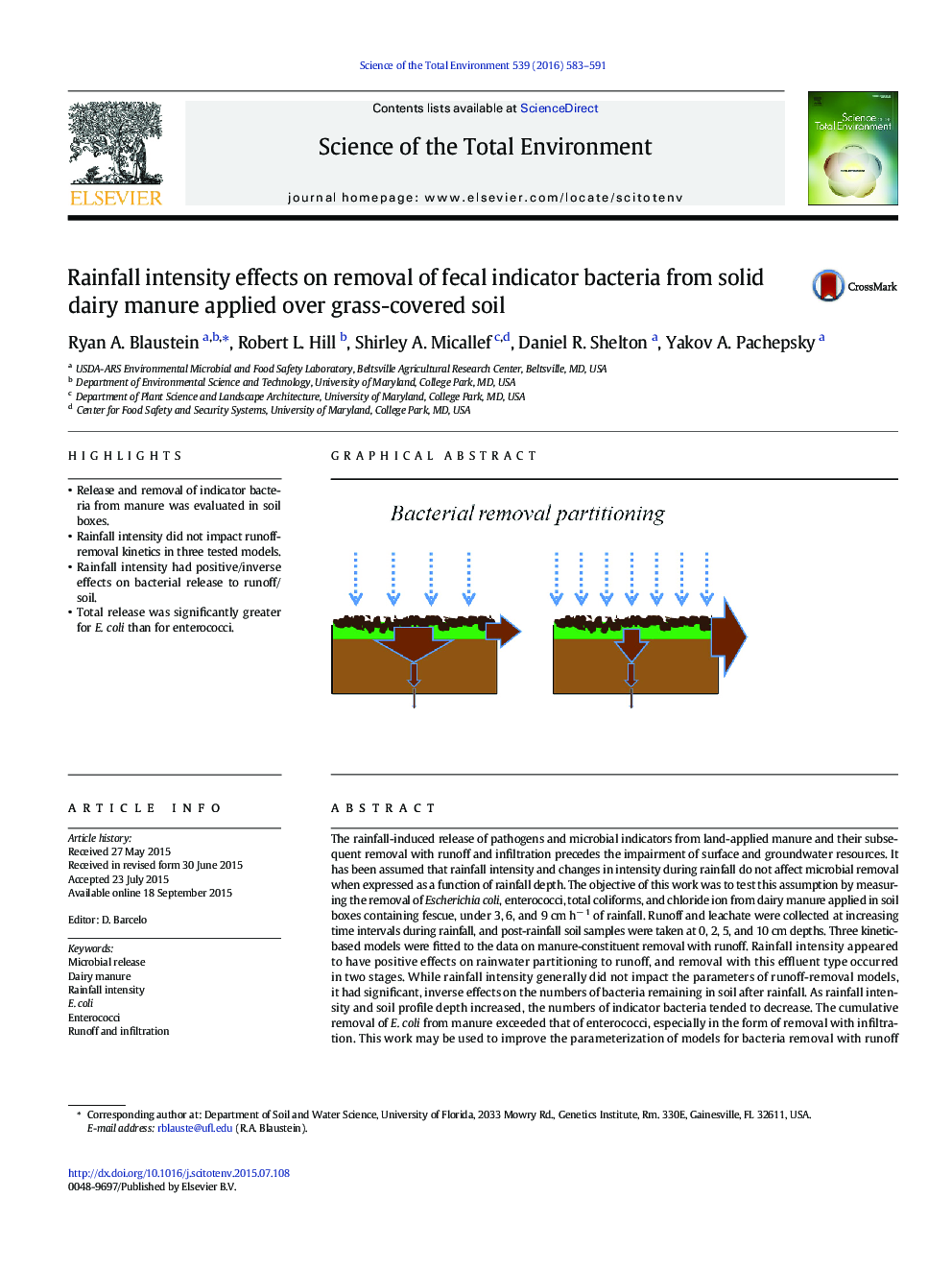| Article ID | Journal | Published Year | Pages | File Type |
|---|---|---|---|---|
| 6325125 | Science of The Total Environment | 2016 | 9 Pages |
â¢Release and removal of indicator bacteria from manure was evaluated in soil boxes.â¢Rainfall intensity did not impact runoff-removal kinetics in three tested models.â¢Rainfall intensity had positive/inverse effects on bacterial release to runoff/soil.â¢Total release was significantly greater for E. coli than for enterococci.
The rainfall-induced release of pathogens and microbial indicators from land-applied manure and their subsequent removal with runoff and infiltration precedes the impairment of surface and groundwater resources. It has been assumed that rainfall intensity and changes in intensity during rainfall do not affect microbial removal when expressed as a function of rainfall depth. The objective of this work was to test this assumption by measuring the removal of Escherichia coli, enterococci, total coliforms, and chloride ion from dairy manure applied in soil boxes containing fescue, under 3, 6, and 9 cm hâ 1 of rainfall. Runoff and leachate were collected at increasing time intervals during rainfall, and post-rainfall soil samples were taken at 0, 2, 5, and 10 cm depths. Three kinetic-based models were fitted to the data on manure-constituent removal with runoff. Rainfall intensity appeared to have positive effects on rainwater partitioning to runoff, and removal with this effluent type occurred in two stages. While rainfall intensity generally did not impact the parameters of runoff-removal models, it had significant, inverse effects on the numbers of bacteria remaining in soil after rainfall. As rainfall intensity and soil profile depth increased, the numbers of indicator bacteria tended to decrease. The cumulative removal of E. coli from manure exceeded that of enterococci, especially in the form of removal with infiltration. This work may be used to improve the parameterization of models for bacteria removal with runoff and to advance estimations of depths of bacteria removal with infiltration, both of which are critical to risk assessment of microbial fate and transport in the environment.
Graphical abstractDownload high-res image (89KB)Download full-size image
